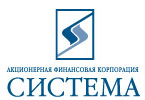|
|
|
 |
Virtual Tours round the Russian Museum The Rossi Wing |
     |
The Russian Museum
»
The Rossi Wing
»
Room 4
Room 4Works from the 18th and First Half of the 19th Centuries – Decorative Woodwork and Metalwork Room IV shows works from the eighteenth and first half of the nineteenth centuries – decorative woodwork and metalwork. The wooden sculptures on exhibition in Room IV are taken from the multi-tiered iconostases in churches and cathedrals in north and central Russia. Despite the official ban on wooden sculpture in Russian churches, folk masters decorated iconostases with carved coloured and gilded figures. Gingerbread boards of various forms and sizes, laundry bats, rollers, scoops, salt cellars, rakes for picking berries and swingles for cleaning linen demonstrate the diversity of carving devices and ornamental designs (geometric, floral and thematic). In the late eighteenth century, a small cabinet was created in Olonets Province, depicting doves in bushes on the sides and a bird of paradise in an apple tree on the front hinge. Nineteenth-century horse doctors’ metal plates were professional badges, attached to the straps of tool bags. Their subjects depicted such realistic actions as the shoeing of a horse. In the late eighteenth century, a centre of miniature enamel painting emerged in the town of Rostov in Yaroslavl Province. The local masters decorated small icons, religious images and crosses, reproducing biblical subjects borrowed or reinterpreted from oil paintings and engravings. Y. I. Rykunin (1816–1855) was one of the leading masters of Rostov miniature enamel painting in the first half of the nineteenth century. He painted a unique icon on exhibition in Room IV – The Resurrection of Christ with Festivals (1854). Following the principle of Old Russian hagiographic icons, this work includes separate scenes from the life, acts and passions of Christ, painted on miniature plates. |
The Project “The Russian Museum: the Virtual Branch” |